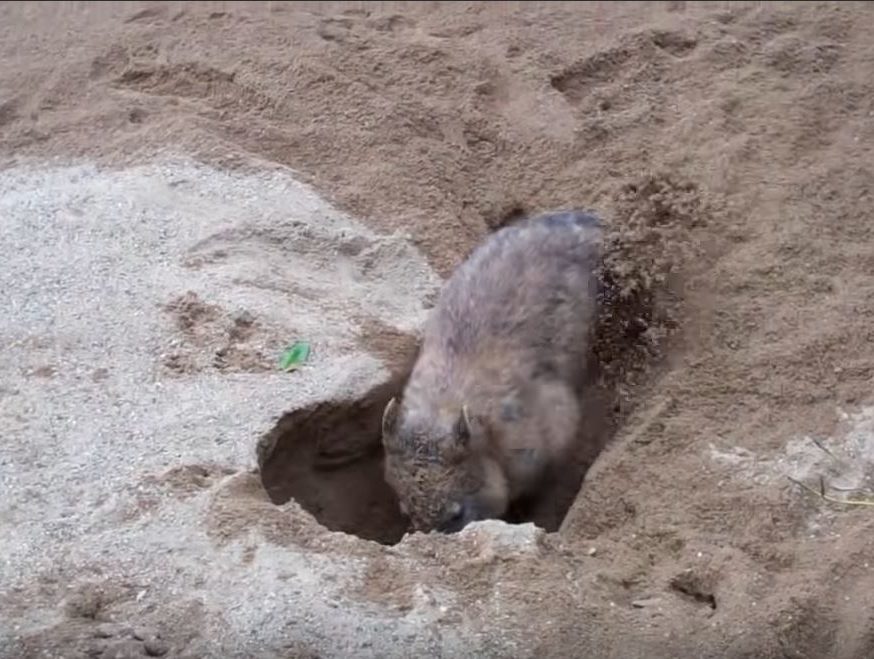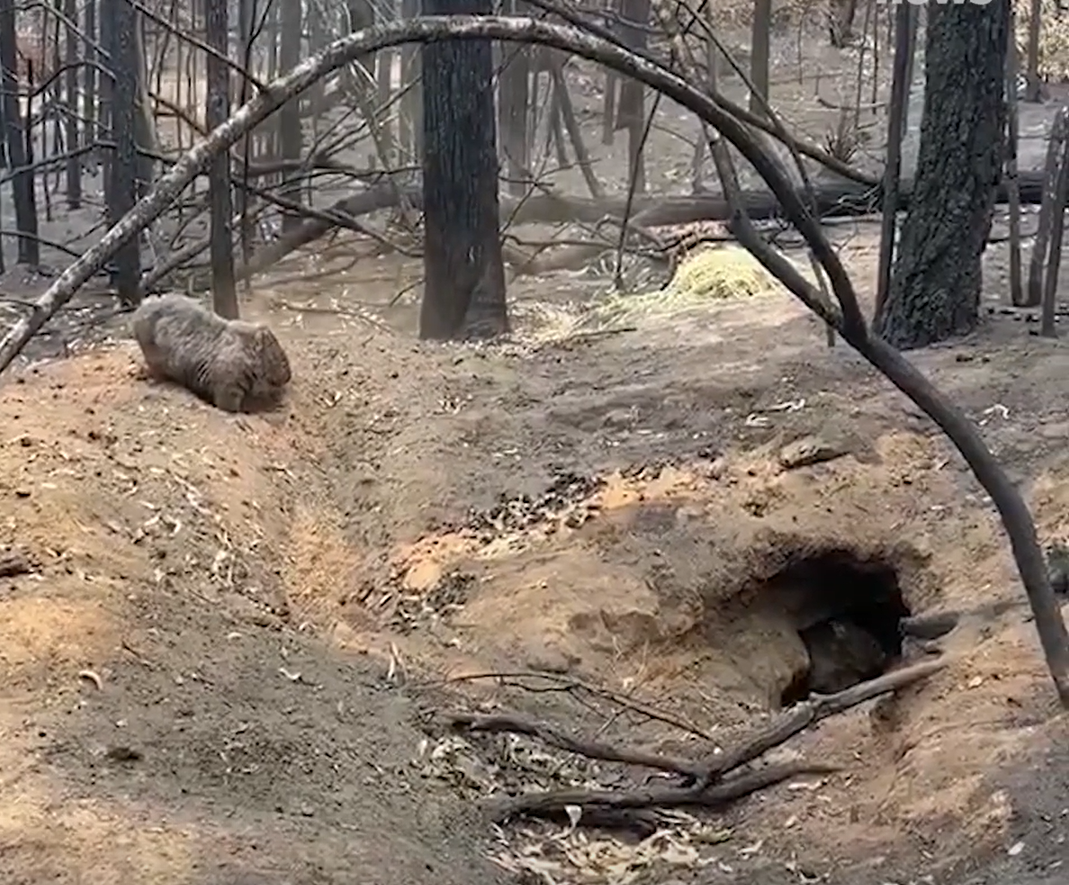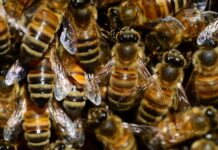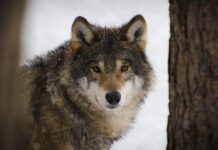While ruthless fires destroyed everything in their path, forests, bushes, houses, living creatures, some were fortunate enough to hide in the underground burrows created by Australian marsupials, wombats. Fires are not able to damage these underground ecosystems.
Captured on Camera
One example is the footage taken by documentary filmmaker Peter Hylands at Cobargo National Park. He went there to document the effects of the fires and also to look for surviving animals.
Hyland described his experience to Yahoo News Australia: “We saw birds that died in flight and then fell to the ground trying to escape the fire.”

“It was terrible, terrible… But then we saw animals that were totally unaffected by the fire and had to hide underground. This is the only possible explanation for such heavy fires,” he added.
The fire that left behind the incineration revealed a world that helped the animals survive. They are underground passages of wombats. Interconnected corridors form an ecosystem that is invisible to the rest of the world.
Underground Shelters
“There are a large number of wombats in the area, so they have extensive networks of these tunnels,” Hylands describes.
Some species of wombats measure up to a meter and weigh up to30 kg. Their burrows hide insects, reptiles, birds, koalas, kangaroos, echidnas, and even sheep.

Biologist Brigitte Stevens, who works for the Wombat Awareness Organization, explains how wombat’s burrows work for other animals:
“Because they live in the dry and hot regions of the continent, many other animals rely on them to survive.”
It is not unusual that wombat’s underground cities have several dozen entrances with an area of several hundred hectares. Thanks to these underground ecosystems, significantly lower mortality was observed in wombats than other Australian animals.
Source and credit: commons.wikimedia.org, https://au.news.yahoo.com/how-wombats-saved-other-wildlife-in-bushfires-071239325.html















